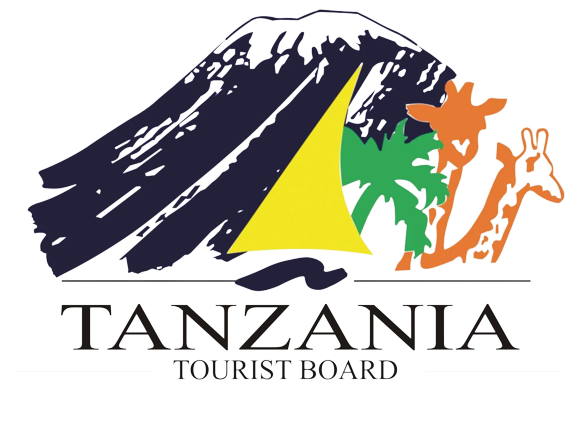Located in Tanzania, Mount Kilimanjaro is the highest peak in Africa and a popular destination for adventure seekers and nature enthusiasts. This majestic mountain stands tall at 5,895 meters (19,341 feet) and offers a thrilling climbing experience that attracts thousands of visitors every year.
Climbing Mount Kilimanjaro is a remarkable journey that takes you through diverse landscapes, from lush rainforests to alpine meadows and finally to the barren snow-capped summit. This incredible trek provides breathtaking views and a sense of accomplishment for those who conquer its heights.
When it comes to climbing Mount Kilimanjaro, several routes are available to choose from, including the Umbwe, Machame, Marangu, Shira, and Lemosho routes. Each route offers a unique experience and varying levels of difficulty, catering to different preferences and fitness levels.
The Umbwe route is known for its challenging steep sections, making it ideal for experienced climbers seeking an adrenaline-filled adventure. The Machame route, also called the “Whiskey route,” offers stunning scenery and a more gradual ascent, providing climbers with better acclimatization opportunities.
The Marangu route, often referred to as the “Coca-Cola route,” is the most popular and well-established trail. It provides huts for accommodation along the way, offering a bit more comfort during the climb. The Shira route starts at a higher altitude, allowing climbers to experience breathtaking views from the beginning. Finally, the Lemosho route offers a longer and more scenic approach, perfect for those seeking a less crowded path.
As you embark on your journey to conquer Mount Kilimanjaro, it’s crucial to be well-prepared. Hiring an experienced guide is highly recommended to ensure your safety and increase your chances of a successful summit. Additionally, proper physical training and acclimatization are essential for a successful climb.
The climate on Mount Kilimanjaro varies with altitude, ranging from tropical at the base to arctic conditions at the summit. It’s crucial to pack appropriate clothing, including layers for warmth, waterproof gear, and sturdy hiking boots. Remember to bring essential equipment like trekking poles, headlamps, and a good quality sleeping bag.
Aside from its awe-inspiring beauty, Mount Kilimanjaro is also part of the Kilimanjaro National Park, a UNESCO World Heritage Site. This national park is home to a rich variety of wildlife, including elephants, buffaloes, leopards, and various species of monkeys. The park’s diverse ecosystem supports an abundance of flora and fauna, making it a paradise for nature lovers.
Tanzania Safari and Wildlife:
Tanzania is renowned for its spectacular wildlife and offers some of the best safari experiences in the world. The country boasts an incredible range of national parks and conservation areas, each with its unique charm and abundant wildlife.
Serengeti National Park is Tanzania’s most famous and iconic safari destination. It is home to the Great Migration, an annual event where millions of wildebeests, zebras, and gazelles traverse the vast plains in search of greener pastures. Witnessing this natural phenomenon is a once-in-a-lifetime experience that attracts safari enthusiasts from around the globe.
Another must-visit destination is the Ngorongoro Conservation Area, which houses the breathtaking Ngorongoro Crater. This volcanic caldera is teeming with wildlife, including the “Big Five” (lion, elephant, buffalo, rhino, and leopard), making it an ideal spot for game drives and wildlife photography.
For those seeking a more off-the-beaten-path experience, Tarangire National Park offers a unique safari adventure. Known for its massive elephant herds, baobab trees, and diverse birdlife, Tarangire
Embarking on a Mount Kilimanjaro climb is an adventure of a lifetime, providing a unique blend of natural beauty, physical challenge, and cultural immersion. It’s an experience that will leave you with lifelong memories and a deep appreciation for the wonders of the natural world.
The best time to climb Mount Kilimanjaro is during the dry seasons, which are typically from January to March and from June to October. These months offer more stable weather conditions and lower chances of rainfall, providing better visibility and a more enjoyable climbing experience.
The duration of a Mount Kilimanjaro climb varies depending on the chosen route. On average, it takes about 6-8 days to complete the trek. This includes time for acclimatization, allowing your body to adjust to the altitude and increase your chances of a successful summit.
Climbing Mount Kilimanjaro is a challenging endeavor, but it is achievable for individuals with a good level of fitness and proper preparation. The main factors contributing to the difficulty are the high altitude, steep sections, and the physical demands of long days of trekking. However, with the guidance of experienced guides and proper acclimatization, many climbers successfully reach the summit.
Previous climbing experience is not required to climb Mount Kilimanjaro, as it is a non-technical trek. However, it is recommended to have a good level of fitness and endurance, as well as experience with multi-day hikes. Regular exercise and training, including cardiovascular workouts and hiking, can help prepare your body for the physical demands of the climb.
Altitude sickness, also known as acute mountain sickness (AMS), can affect climbers on Mount Kilimanjaro. It is caused by the rapid ascent to high altitudes without proper acclimatization. The best way to minimize the risk of altitude sickness is to choose a longer route that allows for gradual ascent and proper acclimatization days. It’s also important to stay hydrated, eat well, and listen to your body throughout the climb.
Packing the right gear is crucial for a successful and comfortable Mount Kilimanjaro climb. Some essential items include sturdy hiking boots, layered clothing for varying temperatures, a warm sleeping bag, a good quality backpack, a headlamp, trekking poles, and personal toiletries. It’s recommended to consult with your tour operator or guide for a comprehensive packing list tailored to your specific climb.
It is highly recommended to hire an experienced guide or join a reputable tour operator for your Mount Kilimanjaro climb. Guides have extensive knowledge of the routes, weather conditions, and safety protocols. They also provide support, motivation, and assistance throughout the trek, enhancing your overall experience and ensuring your safety.
While the main focus of climbing Mount Kilimanjaro is the summit trek, there is an opportunity to spot wildlife in the lower regions of the mountain. The lush rainforests are home to various species of monkeys, including colobus monkeys and blue monkeys. However, the primary wildlife encounters are typically experienced during dedicated wildlife safaris in Tanzania’s national parks and reserves.
Absolutely! Tanzania offers incredible wildlife safaris in renowned national parks such as Serengeti, Ngorongoro Crater, Tarangire, and Manyara. Many visitors choose to combine a Mount Kilimanjaro climb with a safari adventure, allowing them to experience the best of both worlds—the thrill of reaching the summit and the opportunity to witness the abundant wildlife that Tanzania has to offer.
Experience Tanzania’s wildlife like never before with our custom safari packages. Our tailored tours cater to your preferences, ensuring a personalized adventure in some of the world’s most breathtaking natural landscapes. Trust us to create an unforgettable journey just for you.





